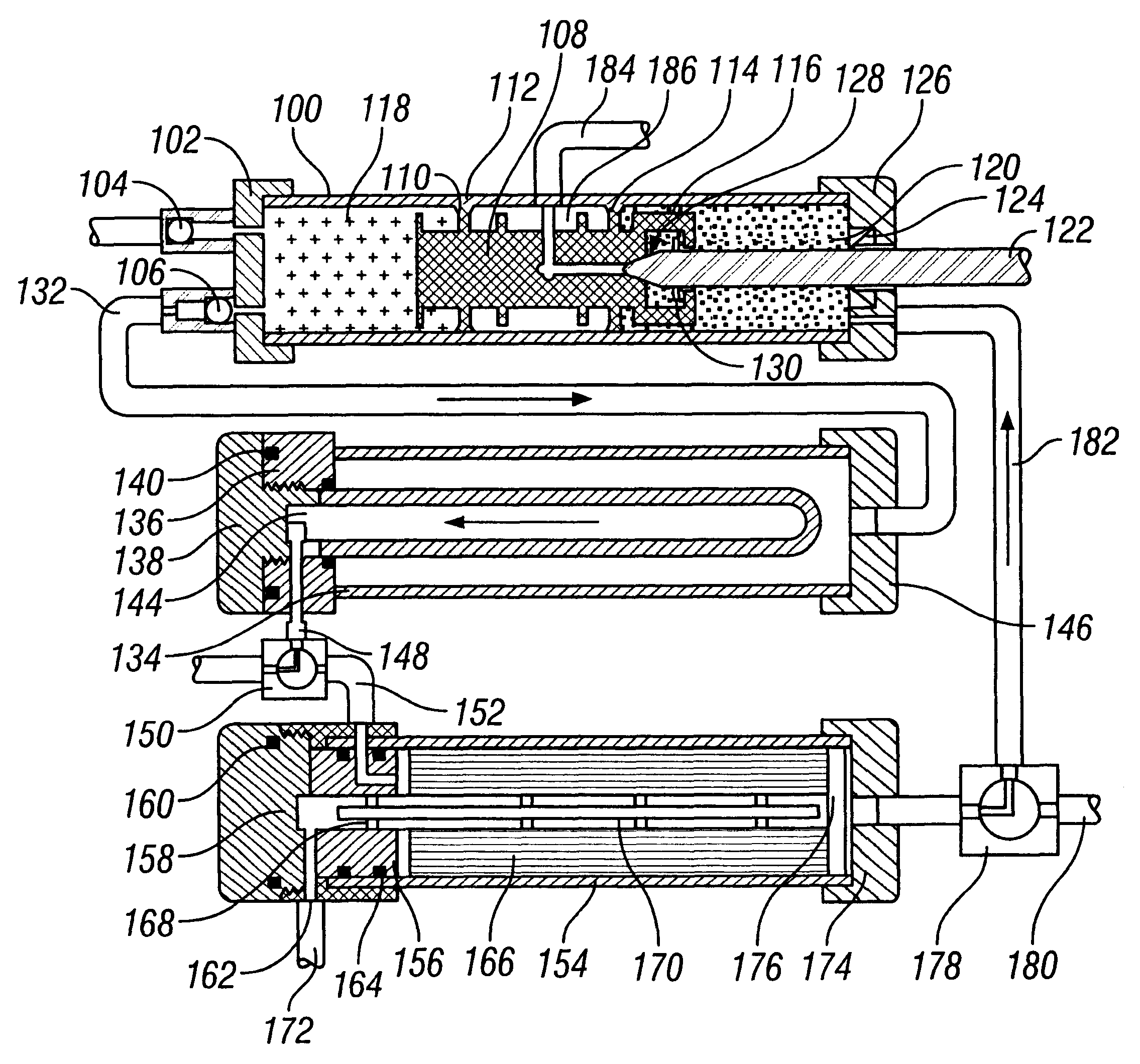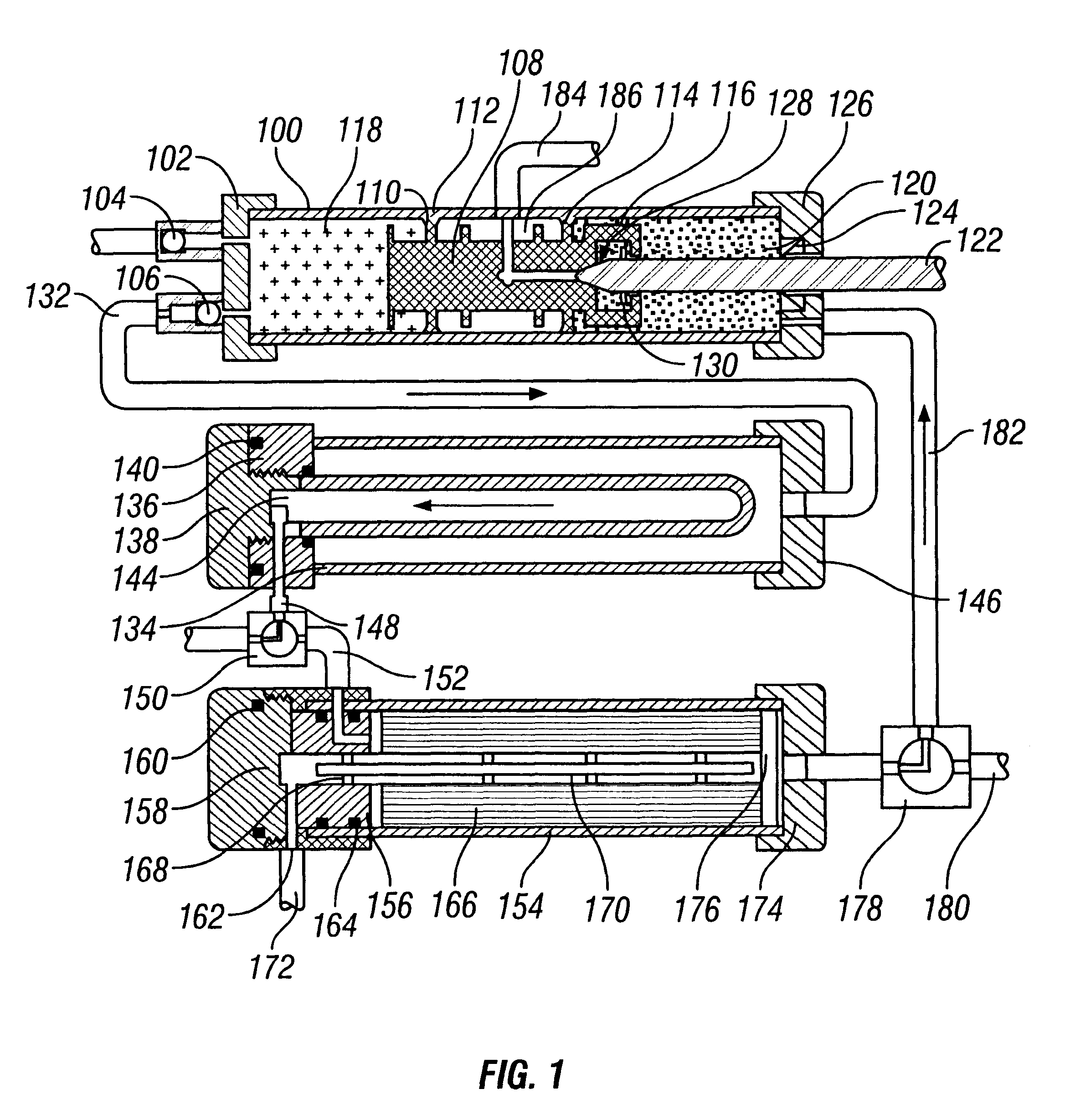Portable hydration system
- Summary
- Abstract
- Description
- Claims
- Application Information
AI Technical Summary
Benefits of technology
Problems solved by technology
Method used
Image
Examples
embodiment 440
In an alternative embodiment of the present invention, shown at 440 in FIG. 16, a cathode 441 is fixed relative to a seal 442, which together, move relative to an anode 443. Hence, when the cathode assembly comprising the cathode 441 and the seal 442 moves downward, the treated brine is forced out of this syringe-type embodiment 440 through an opening 446. The same mechanism can be used to draw an aliquot of brine from a brine container into a body 445 prior to passing current through the brine.
embodiment 460
In an alternative embodiment 460 of the present invention, shown in FIG. 17, a cathode 462 and a seal 464 remain fixed relative to an anode 463. A deformable member 467 is disposed in the wall of an anode 463. When pressure is applied to the member 467 in the direction shown 466, 466', the member 467 deforms inward at the location indicated by element 468 thereby forcing the contents of the anode 463 chamber out of the body 474. When the pressure is relieved, air or liquid is sucked back into the body 474.
As noted above, the amount of oxidant that is formed depends primarily on the total current that passes through the brine solution. Hence, the salt concentration and volume of brine treated do not directly determine the sterilization capacity of the treated brine. In a preferred embodiment of the present invention, the power source includes an energy storage device that is charged and then discharged through the brine solution. This arrangement assures reproducible oxidant generati...
PUM
| Property | Measurement | Unit |
|---|---|---|
| Hydration number | aaaaa | aaaaa |
Abstract
Description
Claims
Application Information
 Login to View More
Login to View More - R&D
- Intellectual Property
- Life Sciences
- Materials
- Tech Scout
- Unparalleled Data Quality
- Higher Quality Content
- 60% Fewer Hallucinations
Browse by: Latest US Patents, China's latest patents, Technical Efficacy Thesaurus, Application Domain, Technology Topic, Popular Technical Reports.
© 2025 PatSnap. All rights reserved.Legal|Privacy policy|Modern Slavery Act Transparency Statement|Sitemap|About US| Contact US: help@patsnap.com



